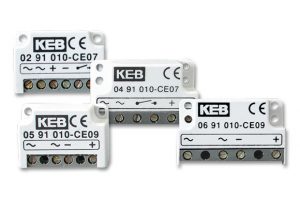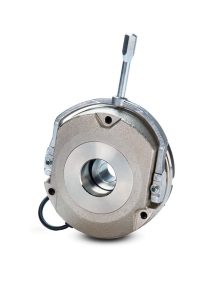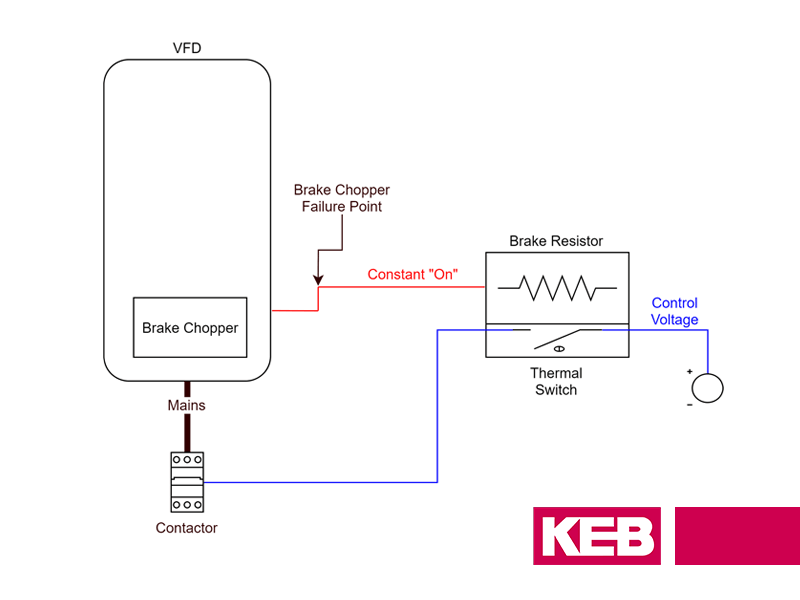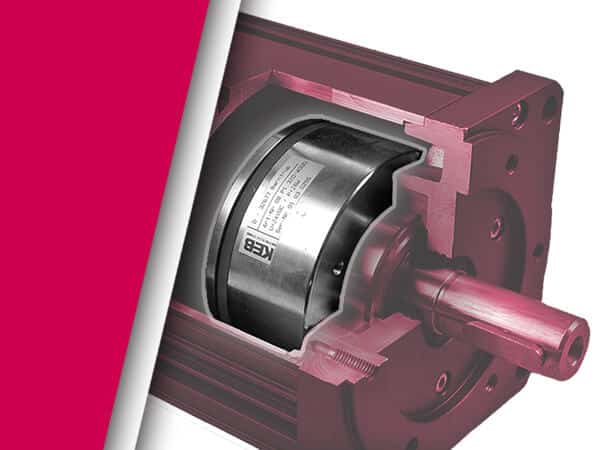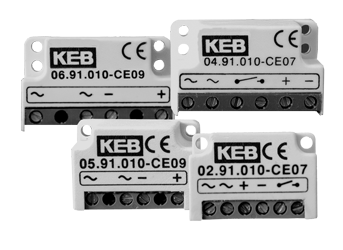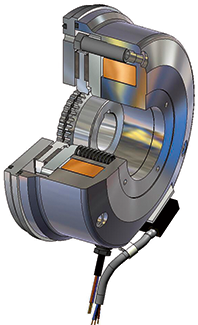Surge Protection for DC Switching with an MOV (Metal Oxide Varistor)
Adding surge protection for DC switching in your application will safeguard vulnerable circuit components like an electromagnetic brake and clutch rectifiers from transient voltages. Without this protection you run the risk of wearing out the contacts of your rectifier prematurely. One method to protect from these surges is to install an MOV.
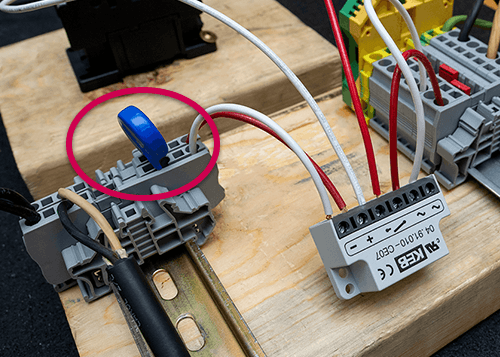
What is an MOV?
A Metal Oxide Varistor (MOV) is a voltage dependent resistor. In other words, it’s an electrical component whose resistance varies with voltage. They are used to protect vulnerable circuit components from short surges of electrical energy.
What happens when power is turned off to your brake?
When the electromagnet is powered some of that energy gets stored within the coil of the magnet. Then, when the electromagnet is switched off that energy has to go somewhere, and can become what is known as a transient voltage, or a short surge of electrical energy that can be damaging to components of the circuit.
Why be Concerned About Transient Voltages?
In the case of an electromagnetic brake, this transient voltage caused by the switching of the brake can cause damage and prematurely wear the contacts of your rectifier to the point of failure. In larger coils with higher voltages this resultant transient voltage could potentially impact other parts of your circuit. Motors, VFD’s, Controllers, and other vulnerable components of the circuit need to be protected against these surges.
How to Prevent These Voltage Surges
An MOV is a cost effective way to protect your electrical components from potentially dangerous and damaging transient voltages. Being a voltage dependent resistor, an MOV does not conduct when the voltage across it is less that what is called the threshold voltage. It essentially has infinite resistance. This means that in normal situations, the MOV does not affect your circuit. But, when that threshold voltage is exceeded, the resistance drops to zero. This causes all of the current to pass through the MOV, where it is displaced as heat and protects your circuit.
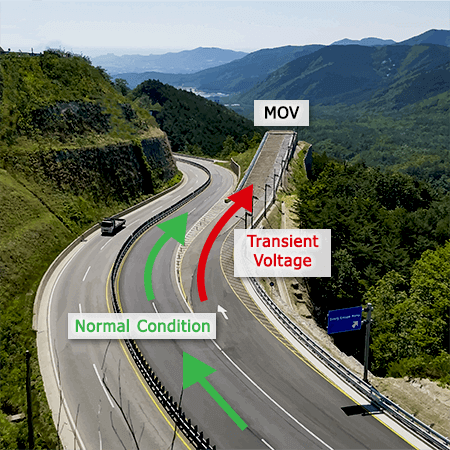
A good way to explain it, is the MOV acts as a runaway truck ramp. Under normal conditions trucks can stay on the road and not be in any danger. If something happens where there is an increase in speed and it can’t be controlled, they get directed to the run off ramp to displace that excess speed in a safe manner.
How to set up a MOV to handle transient voltages
Now we will walk through a typical electromagnetic brake setup and test the transient voltage with and without an MOV
- Experiment set up
- Scope traces
- Demonstrate experimentally why an MOV is a beneficial component
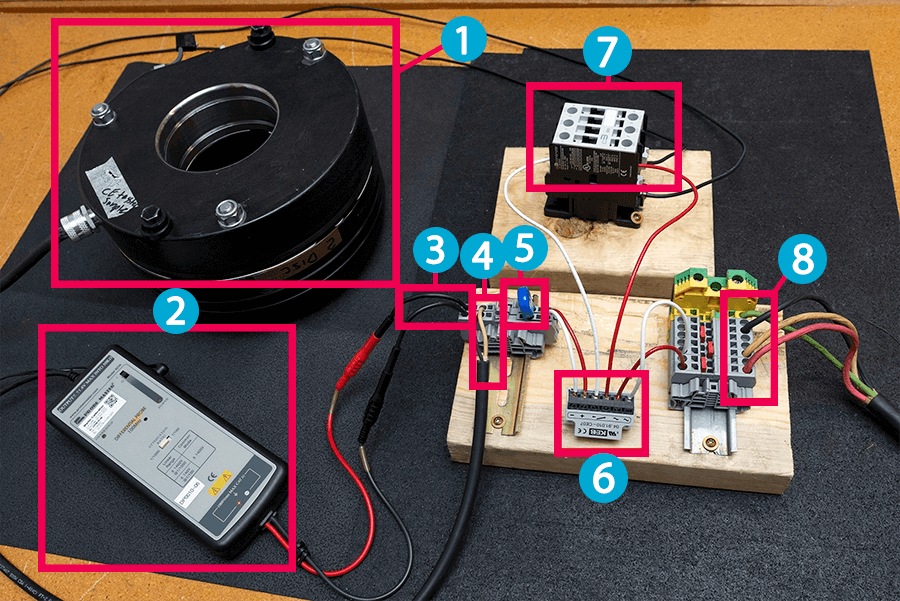
The components in the image above are as follows:
- 1. KEB 205VDC magnet coil
- 2. Isolation probe
- 3. Isolation probe circuit contacts
- 4. Brake coil lead wire
- 5. Metal Oxide Varistor (MOV)
- 6. KEB Combitron 91 half wave rectifier
- 7. Contactor for DC side switching, powered by 120VAC
- 8. 3-Phase 480VAC
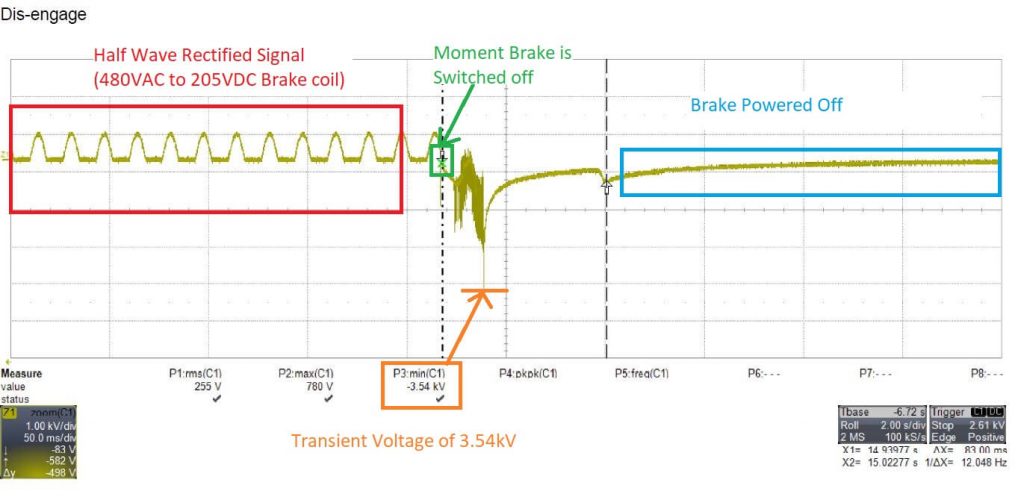
The above image shows how large the transient voltage can be during DC switching operations. In this test, the peak of the transient voltage was 3.54kV. The brake coil tested is rated for 2.3kV, and switching without any protection would not be ideal for any application. Over time, the transient voltages during switching would degrade the brake coil resulting in premature failure.
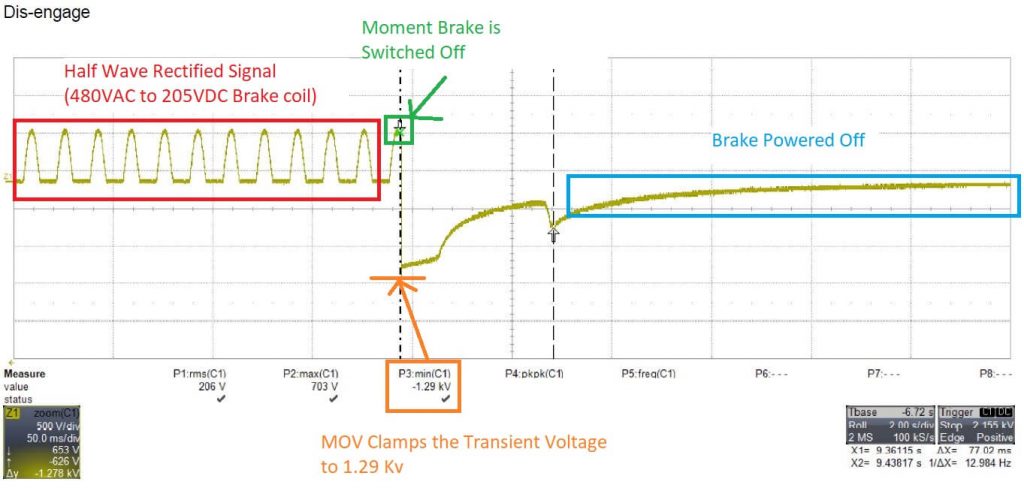
The above image shows the DC switching signal when an MOV is installed. As you can see the MOV has clamped the transient voltage to 1.29kV, well below the rating of the coil. Having the MOV installed ensures that the DC switching does not cause premature wear to the brake coil, or other circuit components.
Conclusion
As you can see, adding surge protection in application safeguards your vulnerable circuit components from transient voltage. Without this protection you run the risk of wearing out the contacts of your rectifier prematurely. If you would like to discuss a specific application, contact a KEB engineer using the form below.
Let's Work Together
Connect with us today to learn more about our industrial automation solutions—and how to commission them for your application.
